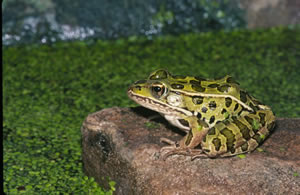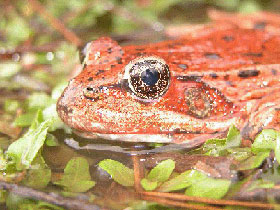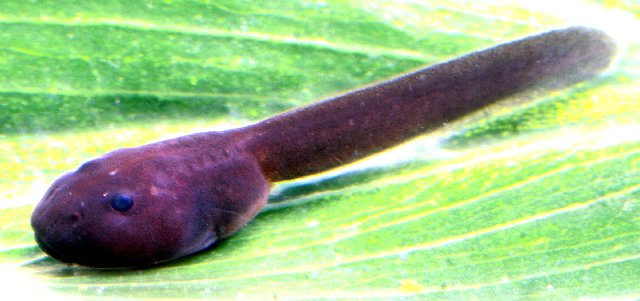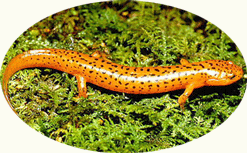- Home
- About S&T
- Taxa/Organisms
- Ecosystems
- Issues
- Methods & Tools
- Reports & Publications
- Location
- Search
Publisher: USGS | Science Center: Upper Midwest Environmental Sciences Center (UMESC, LaCrosse) | Format: URL
www.umesc.usgs.gov — Constructed farm ponds represent significant breeding, rearing, and overwintering habitat for amphibians in the Driftless Area Ecoregion of southeastern Minnesota, western Wisconsin, and northeastern Iowa, a landscape where natural wetlands are scarce. Farm ponds are to prevent soil erosion and create wildlife habitat, yet no studies have been More...

Publisher: USGS | Science Center: Forest and Rangeland Ecosystem Science Center (FRESC, Corvallis) | Format: URL
fresc.usgs.gov — Apparent declines in amphibians have highlighted the need to assess the status of amphibian populations and to determine basic information concerning distribution and trends. This resource describes a study that inventories stream-breeding and pond-breeding amphibians in two large national parks, using sampling data to develop monitoring More...

Publisher: USGS | Science Center: Forest and Rangeland Ecosystem Science Center (FRESC, Corvallis) | Format: URL
fresc.usgs.gov — There is no question that solar ultraviolet (UV) radiation causes reduced survival and a wide range of malformations in amphibian taxa. This study addresses two independent but related questions: First, is UV radiation affecting amphibian populations? Second, can patch occupancy predictions, based on metapopulation theory, provide a useful More...

Publisher: USGS | Format: URL
armi.usgs.gov — Once an abundant frog throughout much of central and southern California, the California red-legged frog (Rana draytonii) is now rare in the Sierra Nevada foothills and the southern portion of its range. In parts of the central California Coast Range, however, large, vigorous populations do remain. This species profile focuses on breeding sites More...

Publisher: Center for Biological Informatics | Format: URL
www.frogweb.gov — FrogWeb is a multi-agency initiative that provides information about recent, global declines and deformities among amphibian populations, and efforts made by scientific agencies to study and address the phenomena.

Publisher: USGS | Science Center: Patuxent Wildlife Research Center (PWRC, Laurel) | Format: URL
www.pwrc.usgs.gov — This site is a tutorial and key for identifying tadpoles and frog larvae, examining morphological traits, and color photographs are included to simplify the identification process.

Publisher: State Agency (Greater Yellowstone Science Learning Center) | Format: .PDF
greateryellowstonescience.org — Amphibian declines have occurred disproportionately among regions and species of the western US, particularly in areas of altered habitat and protected Federal lands including national parks. This issue overview focuses on two national parks, Rocky Mountain (ROMO) and Glacier (GLAC), which are primary mid-level monitoring sites in the Rocky More...

Publisher: USGS | Science Center: Patuxent Wildlife Research Center (PWRC, Laurel) | Format: URL
www.pwrc.usgs.gov — From the website: "This website provides a resource for learning breeding calls of frogs and toads in the eastern United States and Canada. This site provides links to a frog call lookup tool, public quizzes for identifying frog calls in states and provinces through amphibian monitoring programs such as Frogwatch USA, NAAMP, Parks/Refuges by More...

Publisher: USGS | Science Center: Patuxent Wildlife Research Center (PWRC, Laurel) | Format: URL
www.pwrc.usgs.gov — An overview of research that addresses the issue of amphibian decline, assesses relationships between amphibian distribution and abundance and environmental factors in the parks, proposes standardized, long-term monitoring protocols, and evaluates and validates amphibian monitoring techniques at Shenandoah and Big Bend National Parks. The project More...

Publisher: USGS | Science Center: Forest and Rangeland Ecosystem Science Center (FRESC, Corvallis) | Format: URL
fresc.usgs.gov — The National Park Service has stated that declining amphibian populations are the top priority for research in the National Park System. Salamanders are a native vertebrate predator in high-mountain lakes throughout the western US, especially in many small lakes naturally barren of fish. This issue overview demonstrates the potential for using More...

Publisher: USGS | Science Center: Forest and Rangeland Ecosystem Science Center (FRESC, Corvallis) | Format: URL
fresc.usgs.gov — Little is known about the amphibian taxa associated with streams, lakes, ponds, and wetlands in Mount Rainier National Park (MORA). This issue overview addresses the concerns about the possible impacts of introduced trout on amphibian taxa, and park management's interest in documenting current distribution and abundance of amphibian taxa in the More...

Publisher: USGS | Science Center: Forest and Rangeland Ecosystem Science Center (FRESC, Corvallis) | Format: URL
fresc.usgs.gov — Fish introductions have been implicated in the disappearance of amphibian communities and in the alteration of zooplankton communities. Furthermore, the presence and abundance of amphibian larvae and zooplankton in mountain lakes are directly related to nutrient concentrations in the aquatic environment, as well as enhancement to recreational More...
